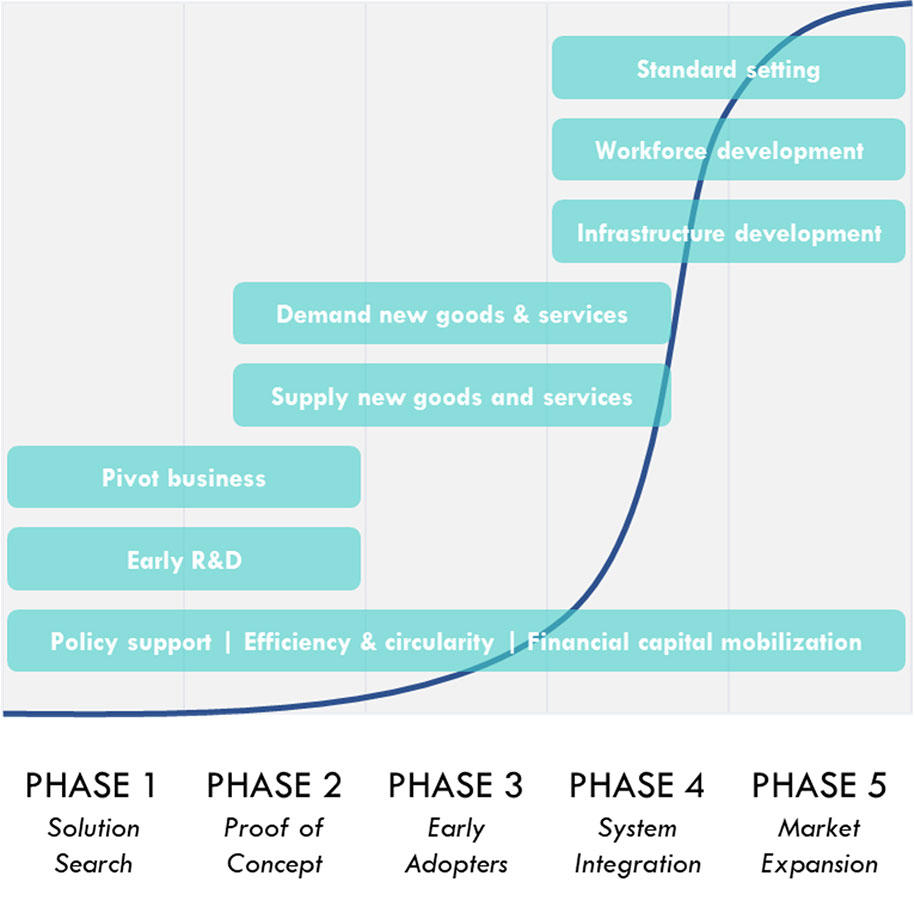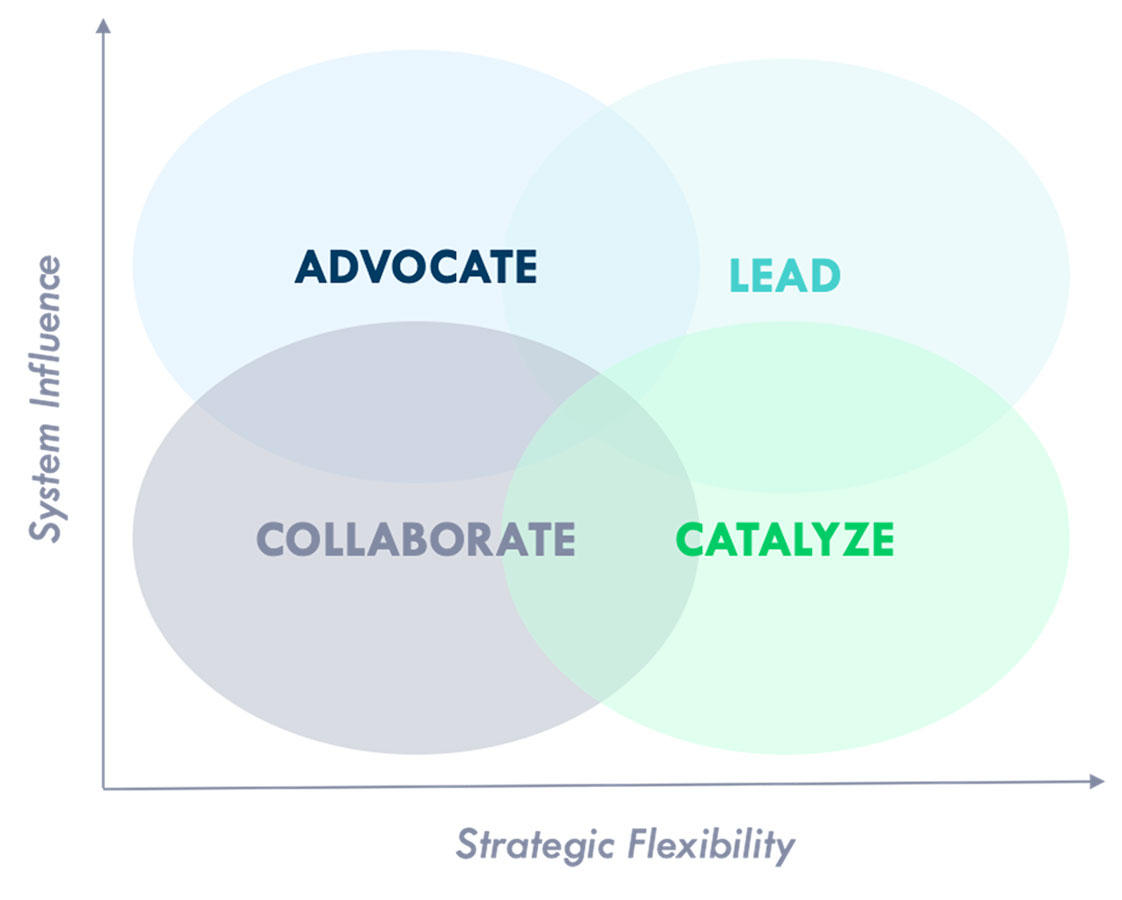How can companies take advantage of the exponential changes unfolding in energy technologies and systems as they seek to achieve net zero emissions in their own businesses and value chains? Emergence strategy describes how leading companies are seizing business opportunities during this period of transformation.
Recognizing that thriving businesses depend on a thriving society and planet, many of the world’s largest and most respected companies have made long-term commitments to achieve net zero emissions of greenhouse gases. Delivering net zero will require transformative changes across virtually all economic sectors and industries, with far-reaching changes in materials, design, technologies, services, and business models. Yet many companies with net zero commitments have still not matched their strategy to the scale of both the challenge and the opportunity.
This is increasingly risky. In a world where consumer preferences, technologies, products, and services are subject to rapid, disruptive and exponential change, missing emerging opportunitiescould have damaging business consequences. In the auto industry, China’s electric vehicle manufacturers and other early movers like Tesla are proving hard to catch even by powerful incumbents, including big auto companies in the US, Germany, and Japan.
This means that leading companies today are not just sharpening their ability to sense and respond to changes linked to the climate and energy systems. They are honing their abilities to initiate systemic change.
Since most companies cannot drive systemic change by themselves, this implies working with other stakeholders, including companies up and down the value chain as well as governments and civil society partners who can help to accelerate change. Emergence strategy applies systems thinking tools to identify new business opportunities, overcome obstacles to system transitions, and pinpoint the roles a company can play as a leader, catalyst, advocate, or collaborator in relation to other key actors in a system.
This process differs from traditional strategy approaches that focus primarily on competition, but the two are complementary. Emergence strategy leverages corporate climate action building blocks such as science-based targets and scope-based emissions disclosures, but with an outward focus on engaging with other actors to drive and shape systems change beyond the company’s direct control.
The emergence strategy process entails three functions that are applied iteratively:
1. System sensing to answer the question: What are the opportunities?
Applying a system-sensing lens can help businesses assess the strategic landscape and identify an available portfolio of opportunities. Top-down sensing, informed by transition pathway analyses, can help companies survey the big picture of how markets are likely to change to meet climate change mitigation goals, while bottom-up sensing focuses on assessing avenues for reducing emissions from existing products and services and the viability of new technologies or services that could outcompete today’s offerings in a low-carbon future.
For example, Stora Enso’s pivot from a paper manufacturer to a renewable materials company reflects both top-down sensing – early recognition of the shrinking paper market, alongside their identification of the renewables market not just as a growing market but also an impact opportunity space – as well as bottom-up sensing, reflected in their decision to pursue product development within the renewable materials market that specifically built on their existing strengths in packaging, building solutions, and biomaterials.
System sensing: What are the opportunities?
2. System solutions to answer the question: What actions can accelerate change?
Once companies have used system sensing to identify one or more climate-related strategic opportunities, they can use systems transformation frameworks to help identify barriers and solutions for these opportunities. Understanding the common patterns of systems transformation and new technology adoption can help identify specific interventions that can trigger positive feedback loops and turn emerging opportunities into mature business realities.
For example, Danish energy company Ørsted and wind turbine manufacturer Vestashave forged a commercial sustainability partnership, with Ørsted committing to buy turbines produced with low-carbon steel and eventually blades for all joint offshore wind projects. Such partnerships and offtake agreements, which establish guaranteed demand,can be game-changing in early markets, which often stall due to uncertainty around futuremarket growth.
System solutions: What actions can accelerate change now?
3. System roles to describe how a particular organization is best suited to act and mobilize others to drive and shape systemic change. This answers the question: How is my organization best positioned to act?
To understand the path by which a company can best influence broader systems transformation, leaders first should assess their strategic flexibility and level of system influence. Strategic flexibility reflects the internal and external factors that define the degree to which a company has permission to change, such as regulatory environments and shareholder expectations. System influence reflects the diverse ways the organization can affect the broader environment, including market share, market position, consumer relations, and more.
For example, Danone recently announced a pledge to work with its farmer suppliers to reduce methane emissions from its fresh milk supply chain by 30% by 2030. This move reflects Danone’s awareness of its own system role: as one of the world’s largest dairy companies, the company is a point of centralization in an otherwise highly decentralized supply chain. As such, it has a high degree of system influence and can leverage this influence to encourage more flexibility – that is, changed behaviors and practices from smaller upstream players to meet Danone’s goal of reducing methane emissions.
System roles: How is my company best positioned to act?Together, these steps allow a company to assess the strategic landscape using systems thinking tools and choose where and how to collaborate and compete.
Applying emergence strategy in your company
While the basic steps required to develop an emergence strategy in any company are straightforward, applying them requires working with partners to explore possible pathways for transformational change and building the capability to apply them. WBCSD, Deloitte and RMI teamed up with members to explore this topic at the WBCSD Council Meeting in Dubai in 2023 and we look forward to continuing the exploration of this area in 2024.
Key messages:






